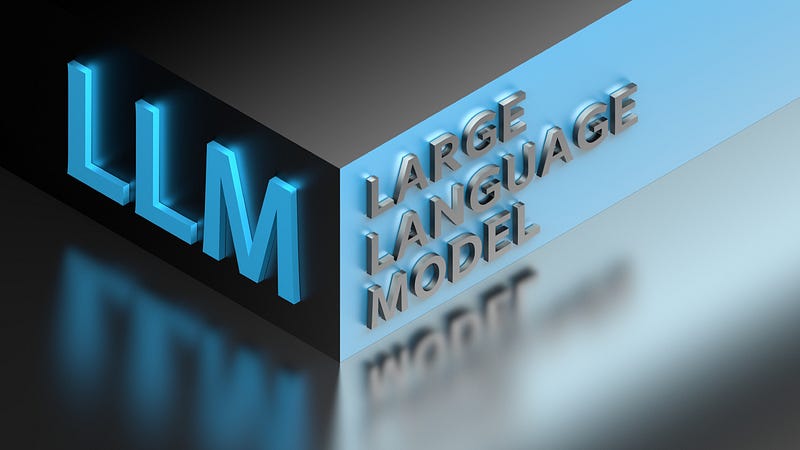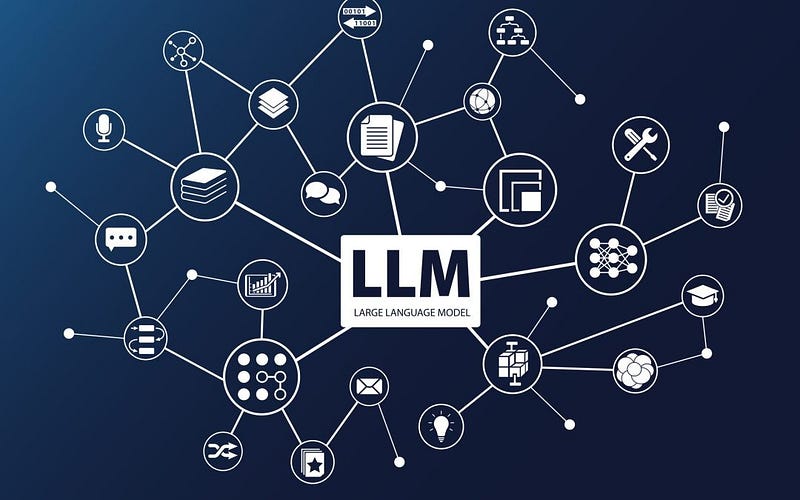The Future of Software Engineering: LLMs and Beyond
The software development landscape is constantly evolving, driven by technological advancements and the ever-growing demands of the digital age. Over the years, we’ve witnessed significant milestones in programming languages, each bringing about transformative changes in how we write code and build software systems.

In 1972, introducing the C programming language marked a watershed moment for the software industry, elevating us from the depths of assembly language and paving the way for more expressive and powerful languages to emerge.
In the subsequent years, we saw the rise of languages like Perl, Python, Ruby, JavaScript, Java, and C#. Each of these languages was considered “high-level” in its time, offering developers a more human-friendly way to communicate with computers. Interestingly, many of these high-level languages, including Perl and its companions, were themselves written in C, highlighting the expressive capabilities of C as a foundation for language design.
Fast forward to 2023, and we stand on the cusp of what could be the next revolution in programming languages. After closely observing the software engineering landscape for 23 years and engaging in recent conversations with colleagues, I can’t help but feel that a specialized Large Language Model (LLM) is poised to power the following programming language revolution.
In this article, we’ll embark on a journey through the past, present, and future of software engineering. We’ll explore how LLMs reshape how we write code, their potential for increasing developer productivity, and what lies beyond LLMs in the ever-evolving programming world. So, fasten your seatbelts as we dive into the fascinating world of LLMs and the future they promise for software engineering.
The Current State of Software Engineering
In the present day, the landscape of software engineering is a dynamic and multifaceted domain. Developers wield an impressive array of programming languages, tools, and methodologies, each tailored to specific tasks and applications. However, this wealth of options comes with its own set of challenges and complexities.
A Multilingual Landscape
One of the defining features of modern software engineering is the diversity of programming languages available. From the versatility of Python to the robustness of Java and the web-centric nature of JavaScript, developers can choose from an extensive toolkit. This linguistic diversity has enabled programmers to tackle various tasks, from web development and data analysis to system-level programming.

However, this diversity can also be a double-edged sword. Developers must invest time and effort in mastering multiple languages, each with syntax, semantics, and idiosyncrasies. This can lead to a steep learning curve, especially for newcomers to the field.
Complexity and Maintenance Challenges
The complexity of software systems has grown exponentially over the years. As software applications become more intricate and interconnected, developers face increasing challenges in system design, scalability, and maintenance. Written in older languages, legacy codebases can be particularly challenging to work with and update.
Furthermore, the software development process has evolved to embrace Agile methodologies, DevOps practices, and continuous integration/continuous delivery (CI/CD) pipelines. While these approaches enhance agility and collaboration, they also introduce new layers of complexity in the development workflow.
The Need for Speed and Efficiency
In today’s fast-paced digital landscape, speed and efficiency are paramount. Businesses and organizations require rapid software development and deployment to remain competitive. This pressure has led to low-code and no-code platforms, which empower users with limited programming experience to create software solutions. However, these platforms come with trade-offs in terms of customization and flexibility.
The Role of Traditional Tools
Traditional Integrated Development Environments (IDEs), version control systems, and debugging tools continue to be essential components of the software development toolkit. These tools have evolved to support the demands of modern software engineering, offering features like real-time collaboration, code analysis, and automated testing.
Challenges in Collaboration and Communication
Effective collaboration and communication among development teams become critical as software projects grow in scale and complexity. Cross-functional teams often include product managers, UX designers, and multiple software engineers. Clear communication and coordination among these diverse roles can be a significant challenge.
The Next Horizon: LLMs
Large Language Models (LLMs) are emerging as a transformative force in this rapidly evolving landscape. LLMs have the potential to reshape how we approach software development, particularly in the context of communication and code generation. They offer a bridge between natural language and programming languages, making it easier for developers to express their intentions in human terms.

As we delve deeper into the role of LLMs in programming, we’ll explore how these models break down barriers, streamline the development process, and set the stage for the future of software engineering.
The Rise of LLMs in Programming
In the not-so-distant past, the idea of conversing with a computer in plain English to instruct it on how to perform complex tasks seemed like science fiction. However, this futuristic vision became a reality with the advent of Large Language Models (LLMs). Let’s explore the rise of LLMs in programming and their pivotal role in bridging the gap between human communication and code generation.
Understanding LLMs: A Brief Overview
Large Language Models, such as OpenAI’s GPT-3 and successors, are a product of advances in artificial intelligence, particularly in natural language processing (NLP). These models are trained on vast amounts of text data from the internet, enabling them to understand and generate human-like text. What sets LLMs apart is their ability to comprehend context, understand nuances, and produce coherent and contextually relevant responses.
LLMs, however, are not just adept at processing natural language. They have proven to be highly versatile and adaptable, capable of assisting in various tasks across different domains, including content generation, language translation, chatbot interactions, and even coding.
The LLM-Powered Programming Revolution
LLMs are making waves in the programming world by enabling developers to communicate with computers more intuitively and naturally. Here’s how LLMs are influencing the programming landscape:
- Natural Language Code Generation: LLMs can understand high-level descriptions of programming tasks and generate code based on these descriptions. For example, you can describe a sorting algorithm in plain English, and the LLM can produce the corresponding code.
- Code Autocompletion: LLMs can provide real-time code suggestions and autocompletion as developers write code. This enhances productivity and assists in writing bug-free and efficient code.
- Debugging and Error Handling: LLMs can help developers identify and fix bugs by interpreting error messages and suggesting solutions. They can provide insights into common programming errors and guide developers through troubleshooting.
- Documentation and Comments: LLMs can assist in generating documentation and comments for code, improving code readability and maintainability. This reduces the burden on developers to write extensive documentation manually.
- Learning and Assistance: LLMs can be valuable educational tools, helping novice programmers learn coding concepts and best practices. They can answer coding-related questions and provide explanations in plain language.
Empowering Developers and Non-Developers Alike
One of the remarkable aspects of LLMs is their accessibility. They empower not only experienced developers but also individuals with limited programming knowledge. Non-technical stakeholders, such as product managers and designers, can communicate their requirements and ideas effectively to the development team, bridging the communication gap between technical and non-technical team members.
The LLM Ecosystem
The impact of LLMs extends beyond mere code generation. They are integrated into a growing ecosystem of tools and platforms that aim to enhance the developer experience. GitHub Copilot, for instance, leverages LLMs to assist developers by suggesting code snippets, offering documentation, and providing contextual information.
The LLM ecosystem is continuously evolving, with developers and researchers exploring novel applications in software engineering, ranging from code review automation to software testing and beyond.
The following section will explore specific examples and use cases where LLMs are already transforming software development practices. Join us as we navigate the exciting world of LLM-powered programming.
How LLMs Are Transforming Software Development
The transformative power of Large Language Models (LLMs) in software development cannot be overstated. These AI-driven models have begun reshaping how developers write code, collaborate, and solve complex problems.
1. Natural Language Code Generation
LLMs have the remarkable ability to generate code from natural language descriptions of tasks and functionalities. This feature significantly accelerates the development process, making it more accessible to a broader range of users.

Example: Imagine you need to implement a feature that calculates the average of a list of numbers. Instead of writing the code manually, you can describe the task in plain English, and the LLM can generate the corresponding code. For instance, you might say, “Calculate the average of a list of numbers,” the LLM can generate the code snippet to achieve this, saving you valuable time and effort.
2. Real-time Code Suggestions and Autocompletion
LLMs are like intelligent coding companions that sit alongside developers, offering real-time suggestions and autocompletion as they write code. These suggestions not only enhance productivity but also help in writing bug-free and efficient code.
Example: As you start typing a function name or variable, the LLM can suggest completions based on context. It can also provide helpful hints for choosing appropriate function parameters or catching syntax errors before they become issues. This immediate feedback accelerates the coding process and improves code quality.
3. Debugging and Error Handling Assistance
Dealing with code errors and debugging can be time-consuming and frustrating. LLMs come to the rescue by interpreting error messages, suggesting potential fixes, and guiding developers through troubleshooting.
Example: If you encounter a runtime error, you can paste the error message, and the LLM can provide insights into the possible causes and suggest solutions. It can also help in writing unit tests to pinpoint the problem area in your code.
4. Automated Documentation and Comments
LLMs excel at generating documentation and comments for code, reducing the burden on developers to write extensive explanations manually. This improves code readability and maintainability.
Example: When you create a new function or class, the LLM can automatically generate docstrings or comments describing the purpose of the code and its parameters. This ensures that your code is well-documented, making it easier for other team members to understand and collaborate on the project.
5. Learning and Assistance for Novice Programmers
LLMs are valuable educational tools, especially for novice programmers. They can explain, answer coding-related questions, and offer guidance on best practices.
Example: Beginner programmers can ask the LLM questions like, “How do I implement a for loop in Python?” or “What is object-oriented programming?” The LLM can provide clear and concise explanations, helping learners grasp fundamental concepts.
6. Enhanced Collaboration Across Teams
LLMs bridge the gap between technical and non-technical team members. They allow for more effective communication, enabling non-technical stakeholders to express their requirements and ideas in natural language.
Example: A product manager can describe a new feature or user story using plain English, and the LLM can help translate these descriptions into code tasks that developers can work on. This streamlines the communication process and ensures everyone is on the same page.
7. Integration into Development Tools
LLMs are seamlessly integrated into development environments and tools. GitHub Copilot, for instance, leverages LLMs to assist developers by suggesting code snippets, offering documentation, and providing contextual information within the code editor.
Example: When you start typing a function call in your code editor, GitHub Copilot can suggest completions and even provide links to relevant documentation or Stack Overflow discussions to help you understand and use the function effectively.
Beyond LLMs: The Next Frontier
While Large Language Models (LLMs) are currently at the forefront of transforming software development, it’s essential to look beyond the horizon and explore what lies ahead. The rapid evolution of technology and artificial intelligence suggests that there is much more in store for the future of software engineering.
1. Specialized LLMs for Domain-Specific Tasks
One exciting avenue is the development of specialized LLMs tailored to specific domains or industries. These domain-specific LLMs would possess deep knowledge and expertise in healthcare, finance, or gaming. They could revolutionize software development for specialized fields, offering context-aware suggestions and solutions.
Example: In healthcare, a specialized LLM could assist in generating code for electronic health record (EHR) systems, ensuring compliance with industry standards and regulations while streamlining development for healthcare applications.
2. Enhanced Code Understanding and Context Awareness
Future LLMs may exhibit an even greater understanding of code semantics and context. They could provide developers with context-aware suggestions beyond mere syntax, considering the broader implications of code changes.
Example: When making changes to a critical part of a software system, an advanced LLM could analyze the impact on other parts of the codebase, identify potential risks, and suggest necessary updates to maintain system integrity.
3. LLMs in Software Architecture and Design
The architectural aspects of software development could also benefit from LLMs. These models could assist in designing scalable and efficient software architectures, optimizing performance, and ensuring adherence to best practices.
Example: An LLM specializing in software architecture could help developers create modular and maintainable systems by offering architectural design patterns, suggesting component relationships, and validating architectural decisions.
4. Enhanced Collaboration and Pair Programming
LLMs could evolve to facilitate more immersive forms of collaboration, such as virtual pair programming. These models could act as virtual programming partners, aiding developers in real time and providing instant feedback.

Example: In a virtual pair programming session, an LLM could suggest code improvements, offer alternative solutions, and even engage in dialogues with developers to brainstorm ideas and problem-solve.
5. Ethical and Responsible AI in Development
The ethical considerations surrounding AI and software development will become increasingly important. Future LLMs may incorporate robust ethical AI principles to ensure that the code generated aligns with ethical guidelines and avoids biases.
Example: LLMs of the future could actively identify and prevent code generation that may have unintended consequences or perpetuate bias, promoting responsible AI practices.
6. Integration of Other AI Technologies
LLMs will likely integrate seamlessly with other AI technologies, such as computer vision and natural language understanding, to provide holistic solutions for software development tasks.
Example: An LLM could analyze requirements written in natural language, visualize potential user interfaces, and generate both front-end and back-end code, offering a comprehensive development experience.
7. Continued Evolution of Development Ecosystems
The broader development ecosystem will evolve to accommodate the capabilities of LLMs. Integrated development environments (IDEs), version control systems, and software development methodologies will adapt to harness the potential of AI-driven development.
Example: IDEs may offer AI-driven code reviews, automated refactoring suggestions, and intelligent code search functionalities powered by LLMs, revolutionizing the developer experience.
Conclusion: Navigating the LLM-Powered Future
The journey through the world of Large Language Models (LLMs) and their profound impact on software development has been captivating. From natural language code generation to real-time assistance and ethical considerations, LLMs are reshaping how developers write code and collaborate on projects.
As we navigate the LLM-powered future, one thing is clear: the potential for innovation and advancement is boundless. LLMs are tools and catalysts for progress, transforming how we create and interact with software. The journey is ongoing, and the possibilities are limitless. Embrace the future, stay ethical, and let your imagination lead the way in this exciting era of LLM-powered software development.
References and Further Reading
To delve deeper into the world of Large Language Models (LLMs) and their impact on software development, you can explore the following references and resources:
- OpenAI’s GPT-3 Documentation: Link to GPT-3 Documentation
- GitHub Copilot: Link to GitHub Copilot
- “The Next Decade in AI: Four Steps Towards Robust Artificial Intelligence” by Gary Marcus
- The Ethics of AI: A Challenge for the Next Decade?
- The Rise of GPT-3: Implications for Natural Language Processing and Beyond
- “Towards Data Science” on Medium: Link to Towards Data Science
- AI in Software Development — Understand its Impact on the Industry
These resources offer diverse perspectives and insights into the world of LLMs and their implications for software development. Whether you’re a developer, a decision-maker, or simply curious about the future of AI, these references provide valuable knowledge to guide your journey.

